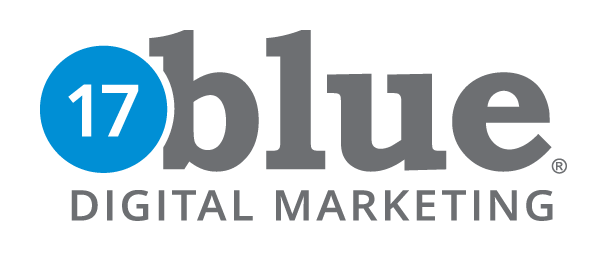Over 20 years in business, we’ve seen entrepreneurs and inventors languish for a lack of useful intelligence (intel). We’ve also seen small businesses and large organizations absorb unnecessary losses in marketing when they operate on assumptions instead of gathering accurate data. Success rarely happens without good intel. Market research is how you gain this important information.
Market research helps companies answer questions like:
- How large is the market opportunity for my product/service?
- Which demographics are most likely to buy my product/service?
- What advertising strategies will resonate best with my target market?
- How does my brand stack up against competitors?
You’ll also want to be clear on what sets you apart from your competition. Understanding how your unique value proposition ties to your audience’s needs and preferences is a powerful advantage.
In this article we’ll cover the purpose of market research and give you tips to conduct it on your own in just a 5 simple steps.
The Purpose of Market Research
Market research is the process of gathering information about your audience, your business, and your competitors. It will also include how they all perform and interact in the marketplace. Products and services, price points, and how competitors are performing are evaluated in this process.
Hiring a market research firm gives you a chance to have deep analysis and wide-angle views of the market, but that requires weeks or sometimes even months to complete. In this article, we’ll show you how to gather key market research information for yourself in a shorter timeline.
Do I use Primary or Secondary Sources?
Marketing research involves collecting data. The types of sources you use can affect the nature and quality of information you’re relying on for planning and decision making. Let’s take a quick look at both types.
Primary sources are first-hand accounts and information. These are direct interactions with consumers through methods like interviews, focus groups or surveys. These are very helpful because you’re getting raw information directly from the source. This type of source is very credible but can provide a narrow sampling. Small sample groups or limited survey responses may result in insufficient or incomplete data.
Secondary sources are data sets, reports and analysis that come from already assimilated research information. This may involve online archives, articles, industry reports, studies and other sources. Secondary sources provide a wider view of data and trends and are often readily available.
When you’re trying to conduct your own market research, we recommend utilizing a blend of both primary and secondary sources. Survey your customers or set up focus groups to collect as much primary data as you can. Analyze it. Then compare those detailed, first-hand results to data you find in secondary sources. The secondary sources may have information you’re missing. A combined approach will give you the best intel as quickly as possible for your planning and action.
Conducting Your Own Market Research in 5 Simple Steps
When conducting market research, the first step is to clearly identify your target audience. Virtually all your other research hangs on this understanding. It is foundational to your success.
1. Identify Your Target Audience
Who is your target audience? Who is your product or service meant to help? Who needs it? Who will love it? How can you find them and connect with them? Where do they go for information or entertainment?
Once you start identifying your target audience demographics and behaviors, the goal is to develop specific buyer personas. Keep in mind that you will likely have several different nuanced personas when you’re done. Start with at least 3-4 of your top contenders. Here’s a list of common demographic and behavioral markers to consider:
- Age
- Gender
- Geographic Location
- Income/Household Income
- Relationship Status
- Family Size
- Education
- Job title
- Interests
- Problems/Challenges
- Goals/Motivations
- Shopping/Buying Behaviors
Use a mix of your primary sources like interviews and surveys with data you can find in social channel analytics, groups and industry-related studies. The Census Bureau, chambers of commerce, the department of commerce and professional/trade publications are all good sources of secondary data. If you have difficulty finding a specific type of data, reach out to your local Small Business Center or Small Business Technology Development Center. They’re great sources of free assistance to business owners and startups who are funded through state community college systems.
2. Spy On the Competition
Maybe “spying” is a stretch. We’re not talking about corporate espionage here, but competitor research is very important. If you’re entering a new market, releasing a new product or any other expansion, you need to know who is already in the market and how they’re doing. Is the market saturated? How are successful competitors positioning their brand and offerings? What price point is best for the market? How is your offering differentiated?
The intelligence you gather here will help you define pricing strategies, product differentiation, marketing tactics that are effective and more. If you see certain marketing campaigns work well, that will inform your marketing team. If your most successful competitor has the best website or blog, it may indicate you should invest in a well-developed site or content marketing.
There are several tools you can leverage for competitor insights. SimplyMeasured, BuzzSumo and SpyFu are industry favorites. They give you a view of what your competitors are doing for their site and search marketing—including keywords and rankings.
Looking at their social profiles will give you some insights into their messaging, engagement tactics and ad strategies. In Instagram and Facebook, the channel’s transparency policy allows you to view their current ad campaigns by clicking on their page’s Info & Ads section.
3. Listen to Your Audience
Once you have identified your audience and have some data from larger, secondary sources, it’s time to get direct feedback from your audience. You need to know if they find value in your product or service, what appeals to them and what they don’t like. This intel gives you insights into where you may expand services, improve offering or find new opportunities. That’s priceless intel for a business.
Talk to your customers and other audience members as directly as possible. Conduct face to face meetings, interviews, and focus groups. Qualify your participants. Make sure they fit your high-value audience. Identify which groups or niches they belong to. This will inform how data is interpreted. You can hire a company to help you with this process and offer free trials or samples in exchange for honest and private reviews.
Send surveys directly to existing customers or take a poll at at event or through social media groups. Most people want to share their opinions – especially if they believe it will make a difference. Capitalize on that and you may find opportunities you were missing in the marketplace.
4. Organize and Analyze the Data
You’ve been collecting data for a while now. It’s time gather all that information and organize it in a meaningful way to benefit your business. In particular, you’ll want to find how the information you’ve gathered relates to the buyer personas you researched and created at the beginning of this process.
A Representative Sample:
Let’s say that you are a home builder. You’ve found that customers line up with three distinct buyer personas:
- Budget-Minded Betty: These home buyers are looking for a new home but want to have control over a few specific elements or design choices. They doesn’t want a “run-of-the-mill” house, but the family’s budget doesn’t quite fit a fully custom-built dream home. They still have kids at home and may be looking at college tuition in a few years. They’re willing to adapt from a basic floor plan to get the few extra items they want most. They expect to move in fairly soon, and just want to feel good about the quality of their family’s home.
- Custom-Design Deborah: These customers want to design and build their ultimate dream home. They want it custom-tailored for their lifestyle and they already have a specific feature list. They value personal customer service and quality and they’re willing to pay more to have it. They want a unique home they can showcase to friends. They’re often executives, officers or successful entrepreneurs. They are willing to take more time in the process to ensure they get exactly what they want. They want to feel important to you.
- Vacation-Home Vicky: These customers are in their golden years. They have a home in the city, but are building a vacation home near the beach to share with their kids and grand kids. They’re not worried about the little details but are very comfortable with buying a beach property and investing in a home they can enjoy with their family and possibly rent out for income during other times. They’re clear on what they want. They don’t feel the need to micro-manage the process. They did their homework before calling you, so they know they will get a quality home to their specifications when you’re done.
Custom-Design Deborah doesn’t care about your contractor discount opportunities on standard features and finishes. She wants the premium products she’s already looked at and wants you to spend more time working through design details with her. However, Budget-Minded Betty would appreciate the chance to look over your standard materials for a cost-savings opportunity.
Connecting your research data with the right buyer persona will affect how you market to specific groups and what offers, products and services you make available to them.
5. Make Strategic Recommendations Based on Intel from Your Market Research
Once you’ve organized your data to align with the buyer personas you created, you’re ready to make strategic recommendations for actions. Your recommendations will be based on what the company is doing now, what customers wish it was doing, opportunities you’ve discovered, etc. Strategic recommendations should be F.A.S.T.:
- Focused: Refer back to the business question you started with and determine what is supported by your research insights. Keep those items in sight as you work. When you are ready to share recommendations, keep them focused around who will be responsible for the action. For example, note product improvements to the development team and marketing recommendations to the marketing team.
- Attainable: If you’re recommendations are unrealistic, you’re setting your team up for frustration. If they’re too aggressive or require more resources than you currently have (budget or hands on deck), break them down into smaller steps to get to where you can accomplish them.
- Specific: Recommendations that are vague or unclear will never be implemented successfully. Make sure your recommendations outline specific, clear actions to be taken. It’s possible that a recommendation may require more specific research. If that’s the case, prepare a plan and budget, if needed.
- Tracked: Tie your recommendations to business outcomes you can track and measure. Forecast the impact of actions on the business. Even if you have to make some small assumptions to get started, having a system to measure by will help you and your team mark progress. You can refine as you get more data on outcomes.
Conclusion
There are several key times market research is needed. Some include:
- Before launching a new company.
- Before expanding into a new market segment or region.
- Before launching a new product or service.
- Before expanding a product or service.
- Before creating marketing content for your website, blog, video or social media.
- When conducting a brand audit or rebranding initiative.
- When revising business/marketing strategies for better outcomes.
You’ll want to consider your specific audiences when creating logos, taglines, product packaging and when choosing which marketing platforms to use in engaging with your audience. Marketing research should be updated periodically to ensure your efforts stay in tune with your audience. It will also help ensure you don’t miss opportunities when market demands shift or customer expectations change.





